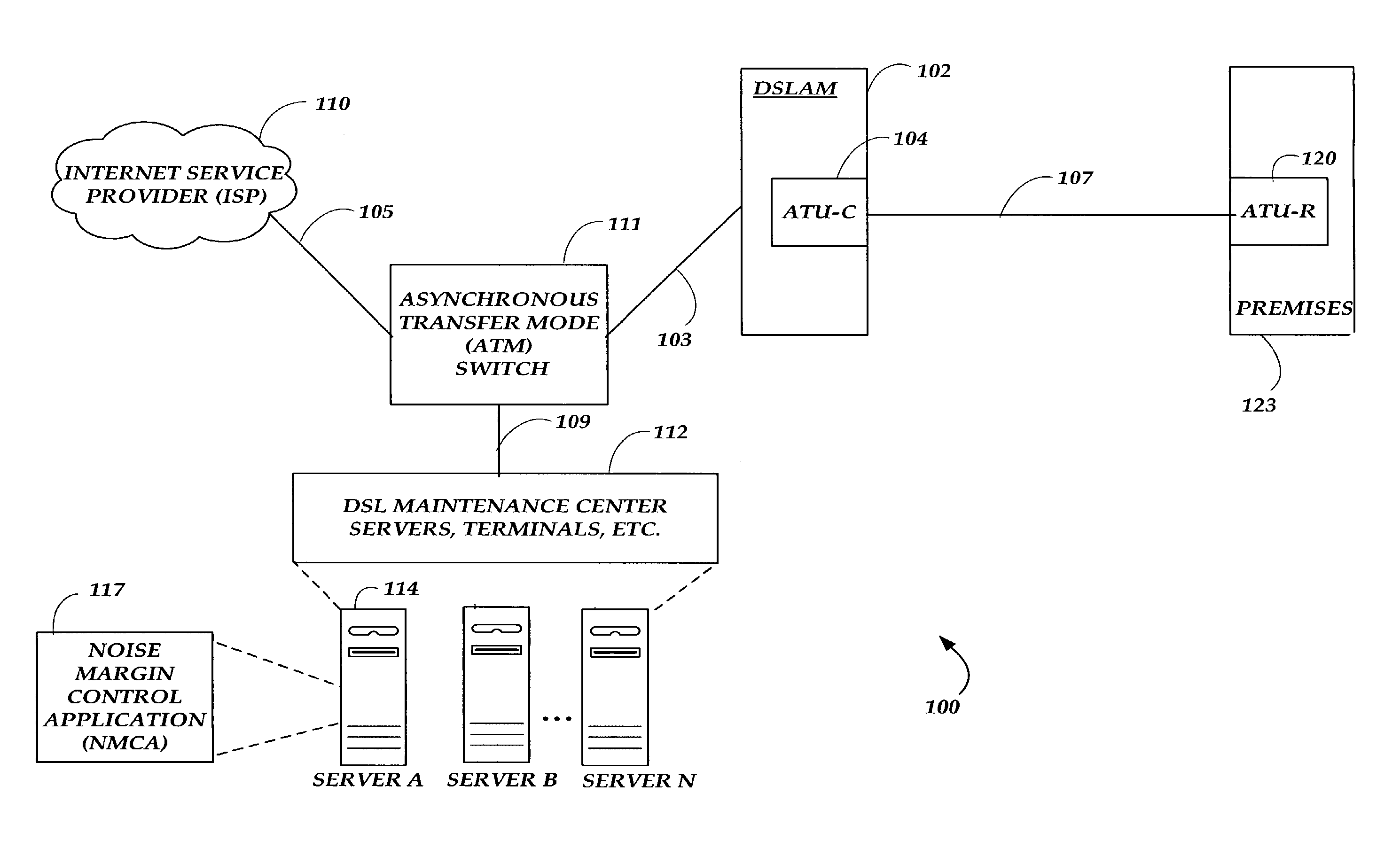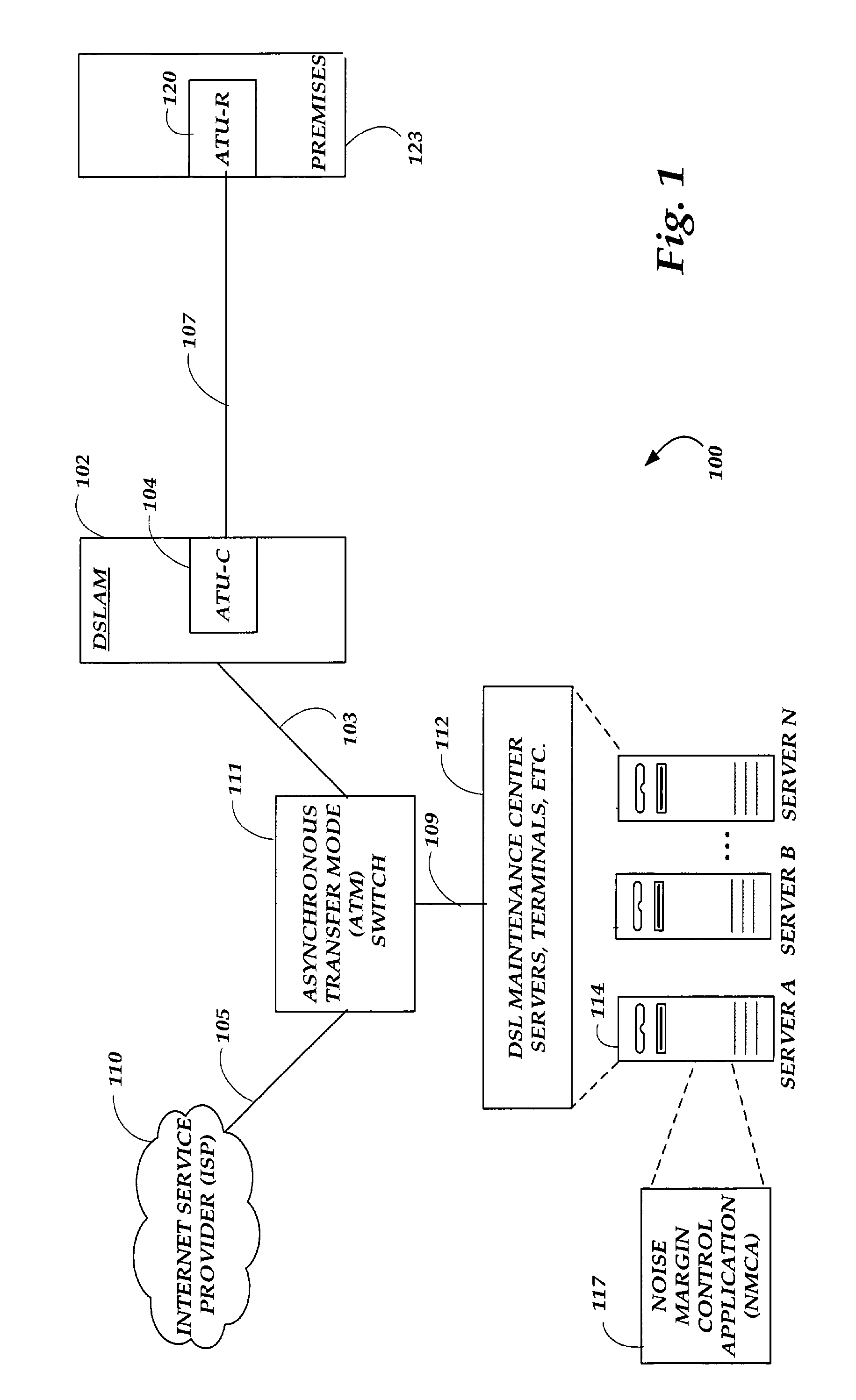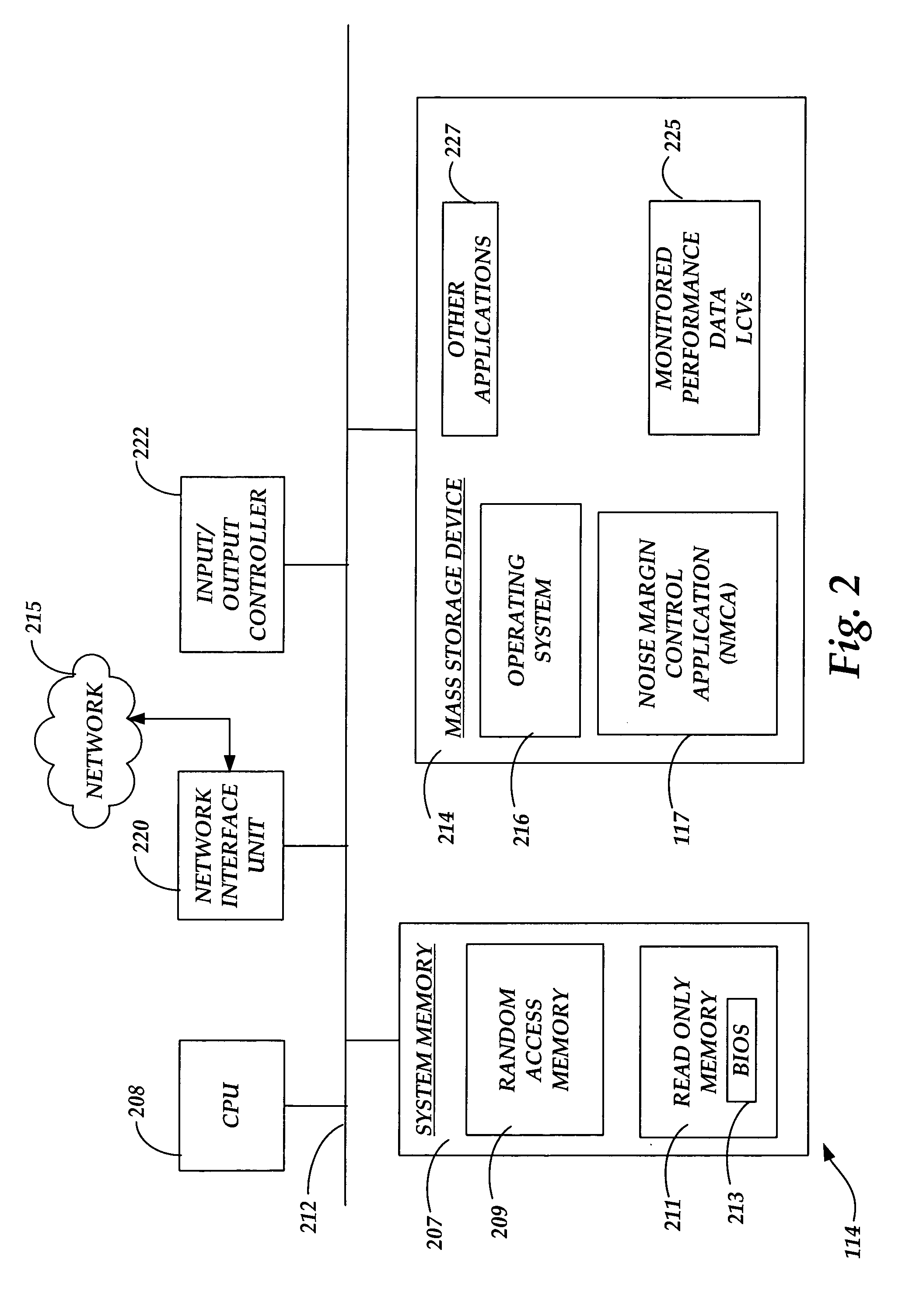Adaptively applying a target noise margin to a digital subscriber line (DSL) loop for DSL data rate establishment
a digital subscriber line and target noise technology, applied in the field of maximizing digital subscriber line (dsl) data rates, can solve the problems of increasing trouble or errors, dsl loops are more subject to impulse noise, and manual handling of this increase in troubled lines is not feasible, so as to achieve the effect of increasing the target noise margin
- Summary
- Abstract
- Description
- Claims
- Application Information
AI Technical Summary
Benefits of technology
Problems solved by technology
Method used
Image
Examples
Embodiment Construction
[0020]As described briefly above, embodiments of the present invention provide methods, systems, and computer program products for adaptively applying a target noise margin to a DSL loop in order to establish a DSL data rate on the DSL loop. In the following detailed description, references are made to accompanying drawings that form a part hereof, and in which are shown by way of illustration specific embodiments or examples. These illustrative embodiments may be combined, other embodiments may be utilized, and structural changes may be made without departing from the spirit and scope of the present invention. The following detailed description is, therefore, not to be taken in a limiting sense, and the scope of the present invention is defined by the appended claims and their equivalents.
[0021]Referring now to the drawings, in which like numerals represent like elements through the several figures, aspects of the present invention and the illustrative operating environment will be...
PUM
 Login to View More
Login to View More Abstract
Description
Claims
Application Information
 Login to View More
Login to View More - R&D
- Intellectual Property
- Life Sciences
- Materials
- Tech Scout
- Unparalleled Data Quality
- Higher Quality Content
- 60% Fewer Hallucinations
Browse by: Latest US Patents, China's latest patents, Technical Efficacy Thesaurus, Application Domain, Technology Topic, Popular Technical Reports.
© 2025 PatSnap. All rights reserved.Legal|Privacy policy|Modern Slavery Act Transparency Statement|Sitemap|About US| Contact US: help@patsnap.com



